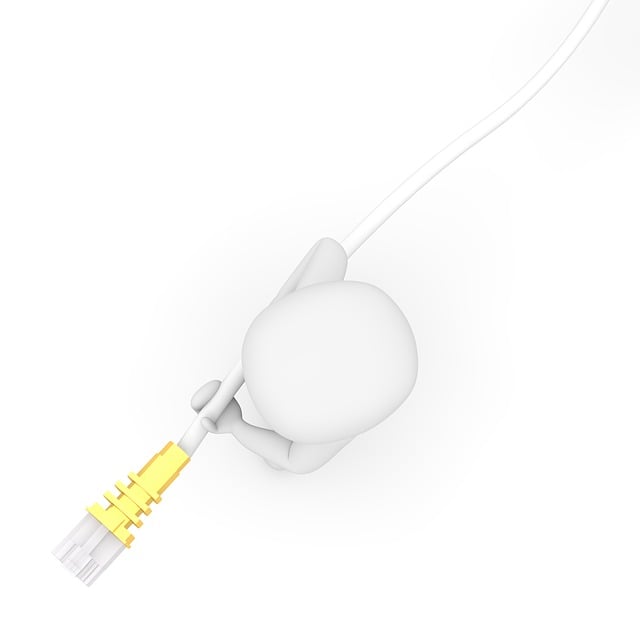Voice over Internet Protocol (VoIP) has revolutionized communication with its advanced data and voice transmission over internet protocols. Combining VoIP with fiber optic cabling solutions brings substantial benefits such as improved audio quality, faster data transfer rates, reduced latency, and minimized packet loss. Fiber optics' higher bandwidth and lower interference make them ideal for high-traffic environments, ensuring clear voice calls. These cabling solutions are transforming VoIP by offering unparalleled advantages in signal integrity and distance, enabling high-definition voice and video calls without degradation or buffering, especially in businesses requiring reliable connectivity over long distances.
In today’s digital era, Voice over Internet Protocol (VoIP) has revolutionized communication, offering crystal-clear calls over IP networks. To ensure optimal voice quality, fiber optic cabling solutions play a pivotal role by providing high-speed, low-latency connections. This article delves into the advantages of VoIP, the significance of fiber optic cabling in enhancing call clarity, and practical implementation strategies. We’ll explore the benefits and considerations for deploying effective VoIP cabling solutions to achieve seamless, high-quality communication.
Understanding VoIP and Its Communication Advantages
Voice over Internet Protocol (VoIP) has revolutionized communication by enabling voice calls and data transmission through internet protocols, instead of traditional telephone networks. This innovative technology offers a range of advantages, especially when paired with advanced cabling solutions like fiber optic cabling. By utilizing fiber optic cables, VoIP systems can deliver crystal-clear audio quality and high-speed data transfer, ensuring efficient and reliable communication.
Fiber optic cabling solutions provide a robust infrastructure for VoIP by offering significantly higher bandwidth compared to copper wires. This enables the transmission of large volumes of data at rapid speeds, minimizing latency and packet loss. The result is a seamless and uninterrupted communication experience, ideal for both personal and professional settings. Additionally, fiber optics are less susceptible to interference, ensuring that voice calls remain clear and free from static or distortion, even in environments with high network traffic.
The Role of Fiber Optic Cabling in VoIP Quality
Fiber optic cabling plays a pivotal role in ensuring crystal-clear communication through Voice over Internet Protocol (VoIP). Unlike traditional copper cables, fiber optic cables transmit data using light pulses, offering significantly higher bandwidth and lower signal loss over long distances. This advantage is particularly significant for VoIP, where real-time voice transmission relies on minimal latency and maximum signal integrity.
The adoption of fiber optic cabling solutions enhances the quality of VoIP by providing a robust and reliable infrastructure. It supports faster data transfer rates, enabling high-definition voice and video calls without degradation or buffering. Moreover, fiber optics’ immunity to electromagnetic interference ensures that voice signals remain clear and undisturbed, contributing to a seamless and superior communication experience for users leveraging VoIP technologies.
Implementing Effective VoIP Cabling Solutions
Implementing effective Voice over Internet Protocol (VoIP) cabling solutions is paramount for achieving crystal-clear communication in any business or organizational setting. The choice of cabling technology plays a pivotal role in ensuring minimal signal loss, high bandwidth availability, and reliable connectivity—all essential factors for seamless VoIP functionality. Among the various options, fiber optic cabling solutions stand out due to their superior performance characteristics.
Fiber optics offer significantly higher data transmission speeds compared to traditional copper cables, enabling faster and more efficient communication. Furthermore, they are less susceptible to signal degradation over long distances, ensuring consistent call quality. This makes fiber optic cabling an ideal choice for businesses looking to deploy robust VoIP systems, especially in large buildings or geographically dispersed operations that demand reliable and high-performance connectivity.
Benefits and Considerations for Crystal-Clear Communication
VoIP (Voice over Internet Protocol) cabling solutions have revolutionized crystal-clear communication, offering significant advantages over traditional phone systems. One of the key benefits is the deployment of fiber optic cabling solutions. These cables transmit data and voice signals using light pulses, enabling faster speeds, greater bandwidth, and superior signal integrity compared to copper wires. This results in high-definition calls with minimal distortion or lag, ensuring a seamless experience for users.
When considering VoIP cabling, several factors play a crucial role in achieving optimal communication quality. First, the infrastructure must be designed to support low latency and high reliability. Proper cable selection, including fiber optic options, is essential to minimize signal loss and maintain signal clarity over long distances. Additionally, network security measures should be implemented to protect against interference and ensure data integrity. Regular maintenance and upgrades are also vital to keep up with evolving technology standards, ensuring continued crystal-clear communication for years to come.
VoIP cabling, particularly with the integration of fiber optic technology, has revolutionized communication. By understanding the advantages of VoIP and the crucial role fiber optic cabling plays in ensuring crystal-clear transmission, businesses can implement effective solutions to enhance their communication infrastructure. The benefits are clear: improved call quality, increased bandwidth, and reduced costs. When considering any communication upgrade, it’s essential to prioritize high-quality cabling to avoid frustrating issues and ensure a seamless, efficient workflow. Fiber optic cabling solutions are the key to unlocking robust and reliable VoIP performance.
